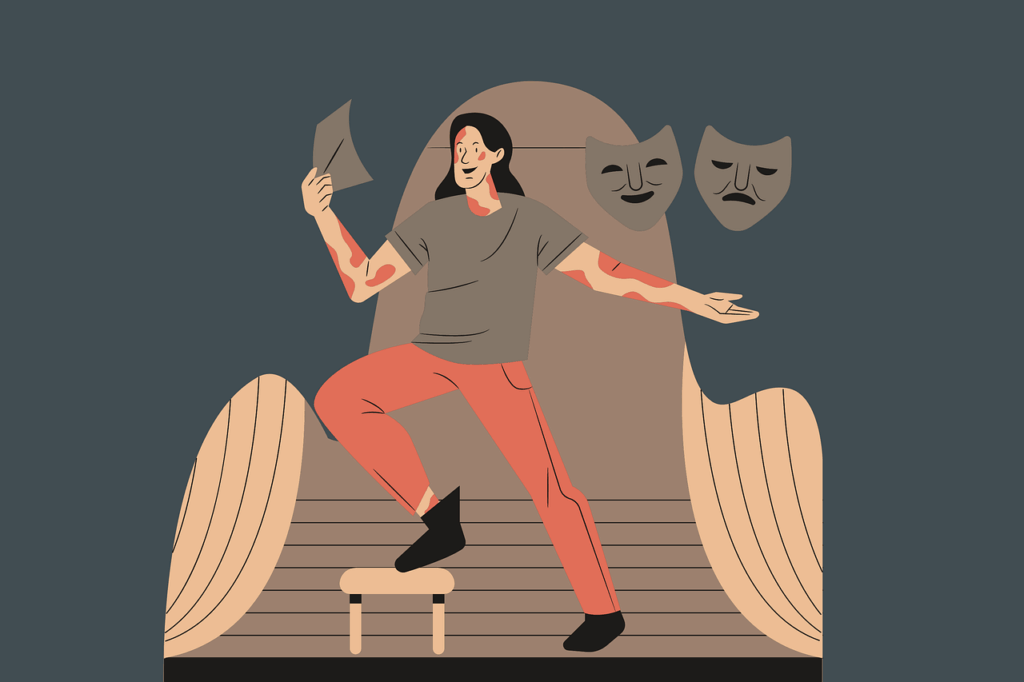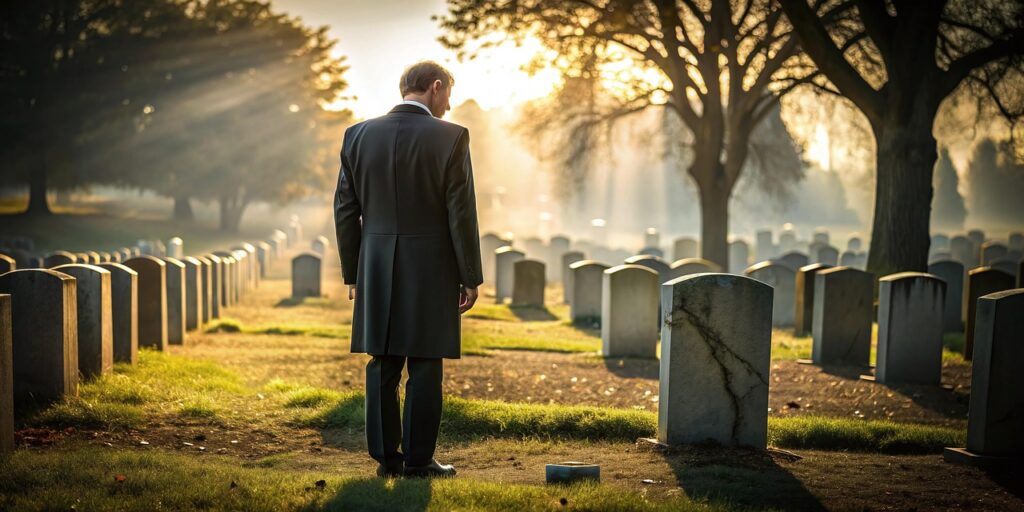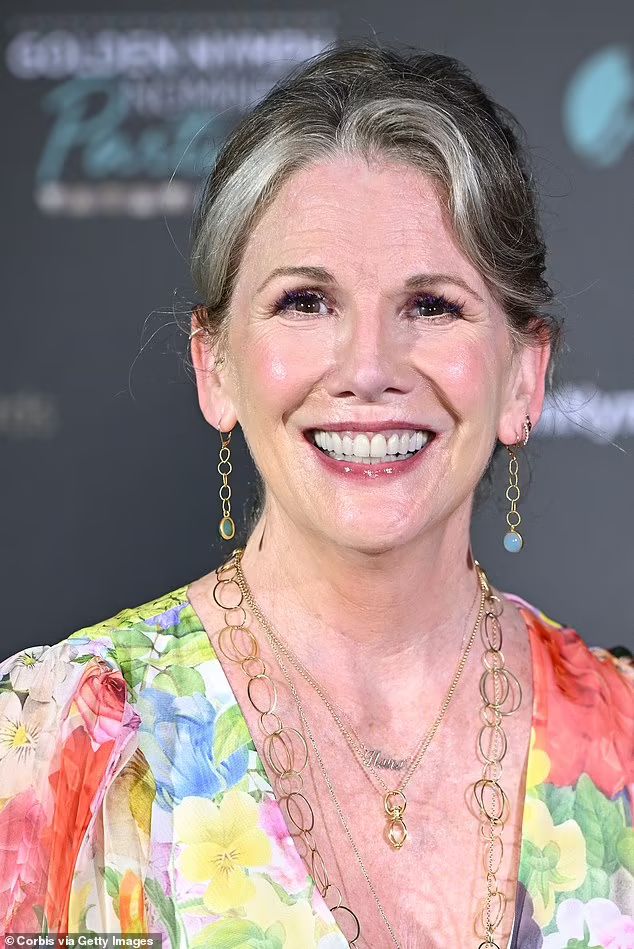
Chuck Connors, a name synonymous with rugged Western heroism and a keen sense of justice, carved an indelible niche in American popular culture. Before becoming the iconic Lucas McCain on “The Rifleman,” Connors lived a life as multifaceted and dynamic as the characters he later portrayed. His journey from a promising professional athlete across two major sports to a celebrated actor is a testament to his versatility and enduring appeal.
This in-depth look explores the extraordinary life of Kevin Joseph “Chuck” Connors, delving into the foundational experiences that shaped the man behind the legendary roles. We will trace his early days in Brooklyn, his remarkable and pioneering career in both professional basketball and baseball, and his eventual pivot to Hollywood, where he achieved widespread fame. Understanding these formative years and career shifts is crucial to appreciating the full scope of his eventual success and the legacy he left behind.
Ultimately, this article will chronicle not just his triumphs but also the personal chapters that defined him, leading up to the circumstances of his passing. From the fields of play to the silver screen, Connors’ story is one of determination, unexpected turns, and a profound impact on millions of fans who cherished his contributions to sports and entertainment.

1. **Early Life and the Origin of “Chuck”**
Born Kevin Joseph Connors on April 10, 1921, in the borough of Brooklyn, New York City, Chuck Connors hailed from a family of Irish descent. His parents, Marcella (née Lundrigan) and Alban Francis “Allan” Connors, were immigrants from Newfoundland and Labrador. He shared his childhood with one sibling, a younger sister named Gloria Marie Connors Cole. Raised as a Catholic, Connors served as an altar boy at the Basilica of Our Lady of Perpetual Help in Brooklyn.
His father became a U.S. citizen in 1914 and worked as a longshoreman in Brooklyn in 1930; his mother had also attained her U.S. citizenship in 1917. Young Connors developed an early and ardent passion for the Brooklyn Dodgers, despite their losing record throughout the 1930s. He harbored a distinct aspiration to one day join the team, a dream that later partially materialized. His athletic prowess was evident from a young age, earning him a scholarship to Adelphi Academy, a preparatory school in Brooklyn, where he graduated in 1939.
After high school, Connors received offers for athletic scholarships from more than two dozen colleges and universities, a testament to his exceptional talent. He ultimately chose to attend Seton Hall University, where he continued to excel in both basketball and baseball. It was during this period that the name “Chuck” would firmly attach itself to him. Since childhood, Connors disliked his given name, Kevin, and experimented with alternatives like “Lefty” and “Stretch.” The enduring nickname “Chuck” originated from his habit on Seton Hall’s baseball team: positioned at first base, he would repeatedly shout to the pitcher, “Chuck it to me, baby! Chuck it to me!” This distinctive cry resonated with his teammates and spectators alike, and the name stuck.
Read more about: Beyond the Bazinga! 14 Wild Rules The Big Bang Theory Cast Had To Follow On Set
2. **A Professional Baseball Journey Begins in the Minors**
Connors’ promising athletic career at Seton Hall was ultimately superseded by an opportunity to play professional baseball, leading him to leave the university after just two years. In 1940, he signed his first professional contract, embarking on a minor league journey that would span over a decade. His initial foray into professional baseball saw him play four games with the Brooklyn Dodgers’ minor league affiliate, the Newport Dodgers, in the Northeast Arkansas League.
After being released, he sat out the 1941 season, then signed with the New York Yankees farm team, the Norfolk Tars, in the Piedmont League. He played 72 games for the Tars before his burgeoning baseball career was temporarily interrupted. At the end of that season, on October 10, 1942, Connors enlisted in the United States Army at Fort Knox, Kentucky, following America’s entry into World War II.
During most of his military service, Connors utilized his athletic background and leadership skills as a tank-warfare instructor. He served in this capacity first at Fort Campbell, Kentucky, and later at West Point in New York, contributing to the war effort. Following his military discharge in 1946, Connors resumed his minor league baseball career, playing for several teams including the Newport News Dodgers (Piedmont League) in 1946, the Mobile Bears (Southern Association) in 1947, the Montreal Royals (International League) from 1948 through 1950, and the Los Angeles Angels (Pacific Coast League) in 1951 and 1952.

3. **Breaking Barriers in Professional Basketball**
Upon his military discharge in 1946, the impressive 6 ft 5 in (1.96 m) Chuck Connors immediately transitioned his athletic talents to professional basketball. He joined the Rochester Royals (now the Sacramento Kings) of the National Basketball League for their 1945–1946 championship season. His physical presence and athletic ability were well-suited for the nascent professional basketball scene.
For the subsequent 1946–1947 season, Connors made a significant move, joining the newly formed Boston Celtics of the Basketball Association of America (BAA). It was during his tenure with the Celtics in 1946 that Connors achieved a unique, albeit accidental, feat. He became the first professional basketball player to break a backboard. This memorable incident occurred during a pregame practice session before the Celtics’ inaugural season’s first home game.
Crucially, Connors broke the backboard not with a forceful slam dunk, which is often the cause of such damage in modern basketball, but with a powerful shot. This event highlighted his immense strength and became a historic footnote in early professional basketball. He went on to play 53 games for Boston before departing early in the 1947–48 season. This dual-sport professional career distinguished him as one of only 13 athletes in American professional sports history to have played in both the NBA and Major League Baseball.
Read more about: Otis Davis, Olympic Gold Medalist Who Broke Records and Barriers, Dies at 92

4. **A Brief Stint in Major League Baseball**
After his professional basketball career with the Boston Celtics, Chuck Connors returned his primary focus to baseball, harboring persistent dreams of reaching the Major Leagues. He attended spring training in 1948 with his beloved Brooklyn Dodgers, hoping to finally make the squad he had admired since childhood. Despite his efforts, he did not secure a spot on the Major League roster that year.
Undeterred, Connors spent two seasons playing for the Dodgers’ AAA team, the Montreal Royals, further refining his skills. His perseverance paid off when, in 1949, he made his Major League Baseball debut, playing a single game with the Brooklyn Dodgers. This brief appearance allowed him to fulfill a lifelong ambition.
Following his one game with the Dodgers, Connors returned to the Montreal Royals for two more seasons. His determination eventually led him to another Major League opportunity when he joined the Chicago Cubs in 1951. With the Cubs, he played in 66 games, primarily as a first baseman and occasionally serving as a pinch hitter. His career offensive totals included 67 games, 202 at-bats, 16 runs, 48 hits, 2 home runs, and 18 runs batted in, with a batting average of .238. In 1952, he was once again sent to the minor leagues, joining the Cubs’ top farm team, the Los Angeles Angels, marking the twilight of his active professional baseball career on the field.
Read more about: Lynda Obst: A Pioneering Producer and Unwavering Champion for Women in Hollywood Remembered at 74
5. **The Unexpected Leap into Acting**
As Chuck Connors continued his professional baseball career, particularly during his time with the Los Angeles Angels in the early 1950s, a realization began to dawn. He recognized that his path to a long-term, highly successful career in professional sports was likely reaching its conclusion. With a batting average of .259 the previous season and a prediction that he had only a couple of seasons left, Connors candidly acknowledged that his baseball career had “reached the twilight stage.” This self-awareness prompted him to consider an entirely different trajectory.
Fortunately, playing baseball near Hollywood proved to be a serendipitous circumstance for Connors. His striking physique, commanding presence, and distinctive athletic background caught the eye of an MGM casting director. This chance encounter proved pivotal, leading to his subsequent signing for an acting role in the 1952 Tracy–Hepburn film “Pat and Mike.” In this film, Connors made his silver screen debut, performing the role of a police captain.
The positive reception to his performance cemented his decision to formally change careers. In 1953, after careful deliberation, he decided to retire from professional baseball in favor of a career in motion pictures. He expressed this in a letter to Angels President Don Stewart, stating, “Baseball owes me nothing. I owe it all that I have and much of what I hope to have. Baseball made my entrance to the film industry immeasurably easier than I could have made it alone. To the greatest game in the world I shall be eternally in debt.” That same year, he further established his acting credentials, starring opposite Burt Lancaster in “South Sea Woman” and opposite John Wayne in “Trouble Along the Way.”
Read more about: Hollywood’s Strategic Rebrands: Actors Who Changed Names Mid-Career—and Found Stardom

6. **From Athlete to Character Actor: Building a Foundation**
With his official transition from professional sports to acting, Chuck Connors quickly began to build a substantial filmography, demonstrating a natural aptitude for the craft. His early television career saw him guest-starring in a variety of shows, allowing him to hone his skills across different genres. His guest-starring debut was on an episode of NBC’s “Dear Phoebe,” and he also appeared in two episodes of Dale Robertson’s NBC Western “Tales of Wells Fargo,” portraying the bandit Sam Bass in one of them.
Connors showcased a rare comedic talent in a 1955 episode (“Flight to the North”) of “Adventures of Superman,” where he took on the role of Sylvester J. Superman, a lanky rustic yokel who comically shared the same name as the title character. He further demonstrated his range in the 1956 episode “The Comeback” of the religion anthology series “Crossroads,” where he was cast as Lou Brissie, a former professional baseball player wounded during World War II.
The year 1957 proved significant for Connors, as he co-starred in the Walt Disney film “Old Yeller” in the memorable role of Burn Sanderson, a part that would later influence his casting in “The Rifleman.” That same year, he also co-starred in “The Hired Gun.” Beyond television, Connors also secured roles in feature films that further solidified his presence in Hollywood, including “The Big Country” with Gregory Peck and Charlton Heston. His guest appearances continued across numerous popular shows such as “Hey, Jeannie!,” “The Loretta Young Show,” “Gunsmoke,” “Wagon Train,” and “General Electric Theater,” hosted by Ronald Reagan, steadily building his reputation as a beloved television character actor.
Read more about: No Nepo Babies Here: 15 A-List Celebrities Who Don’t Want Their Kids in Show Business
7. **Becoming a Western Icon: The Rise of “The Rifleman”**
The role that would forever cement Chuck Connors’ place in television history arrived in 1958: Lucas McCain in “The Rifleman.” Connors famously beat out 40 other actors for the lead in this ABC Western series, portraying a widowed rancher in the New Mexico Territory. His character was known for his steadfast moral compass and extraordinary skill with a customized Winchester rifle, which he could cock with remarkable speed.
“The Rifleman” broke new ground in television programming as it was the first show to feature a widowed father raising a young child, giving it a unique emotional core. In a 1959 interview with TV Guide, Connors recounted how the producers of Four Star Television initially offered him a certain amount of money for 40 episodes for the 1958–59 season. Connors, earning more as a freelance actor, initially declined the offer.
However, a fortuitous turn of events led the producers to reconsider. Days after his refusal, they watched “Old Yeller,” where Connors played a strong father figure as Burn Sanderson. Deeply impressed, they revisited their offer, presenting Connors with a significantly better deal that included a coveted five-percent ownership of the show. This revised offer proved irresistible, and Connors accepted the role that would define his career.
“The Rifleman” was an immediate and resounding success. In its inaugural 1958–59 season, it ranked number four in the Nielsen ratings, a remarkable achievement. Connors shared the screen with Johnny Crawford, who beat out 40 other young stars for the pivotal role of Lucas’s son, Mark. The show maintained high ratings for several seasons, only seeing a drop during its final 1962–63 season when it faced competition from “The Lucy Show.” Despite this, “The Rifleman” concluded its run after five successful seasons and 168 episodes, leaving an enduring legacy.
Read more about: Rustle Up Some Fun: 14 Surprising Behind-The-Scenes Facts From The Golden Age of TV Westerns
8. **Post-“Rifleman” Career: Tackling Typecasting**
After five immensely successful seasons as Lucas McCain, Chuck Connors found himself at a crossroads common to many actors who achieve iconic status: typecasting. The image of the quick-drawing, morally upright rancher was deeply ingrained in the public’s mind, a testament to his powerful portrayal. However, Connors, ever the versatile performer who had already showcased a breadth of talent from comedy to drama, was eager to explore new avenues and challenge audience expectations beyond the Western frontier.
His immediate post-“Rifleman” projects saw him branching out, often in roles that, while different, still leveraged his commanding screen presence. In 1963, he appeared in the family film “Flipper,” playing the role of Porter Ricks, a marine patrol officer and a father, which allowed him to tap into a different kind of paternal authority. That same year, he co-starred in the comedy “Move Over, Darling” alongside Doris Day and James Garner. This role, a remake of the 1940 film “My Favorite Wife,” saw him stepping into a part previously played by Randolph Scott, further showcasing his ability to adapt to varying genres and leading men.
Despite these efforts, the shadow of Lucas McCain loomed large. Connors then starred in a series of short-lived television shows, perhaps in an attempt to find another enduring character. These included ABC’s “Arrest and Trial” (1963–1964), an early legal drama that predated “Law & Order” in its two-part format, featuring him as lawyer John Egan. He also led NBC’s post-Civil War era series “Branded” (1965–1966), where he played Captain Jason McCord, a West Point graduate dismissed for supposed cowardice, who roamed the country seeking to clear his name.
In 1967–1968, Connors ventured into another unique television concept with the ABC series “Cowboy in Africa,” co-starring with Tom Nardini and Ronald Howard. This series placed a Western hero archetype in an unexpected setting, further illustrating Connors’ willingness to experiment and his enduring appeal as a robust, adventurous figure. Even though these shows had shorter runs, they collectively built a significant filmography that underscored his continued presence in television throughout the 1960s.
9. **Expanding His Range: Notable Film and Television Appearances**
While “The Rifleman” remains his most iconic role, Chuck Connors’ acting career spanned four decades, encompassing a remarkable variety of film and television projects that often allowed him to break free from his Western hero image. He was a frequent presence in feature films, appearing alongside Hollywood legends in diverse genres. He acted in “The Big Country” with Gregory Peck and Charlton Heston, a Western epic that solidified his big-screen credentials. Later, he took on roles in sci-fi thrillers like “Soylent Green” (1973) with Charlton Heston and Edward G. Robinson, portraying Tab Fielding, a part quite distinct from his upright rancher persona.
His filmography also included comedic turns, such as a memorable appearance in “Airplane II: The Sequel” (1982) as ‘The Sarge,’ a role that highlighted his willingness to embrace self-parody and his comedic timing. Other notable film credits include “Geronimo” (1962), where he played the titular Apache leader, and “The Tourist Trap” (1979), a horror film where he took on the chilling role of Mr. Slausen, demonstrating a wide and often unexpected range of characters he was willing to inhabit.
Beyond feature films, Connors continued to be a ubiquitous figure on television, often taking on guest-starring roles that stretched his acting muscles. He appeared in anthology series like “Night Gallery,” hosted by Rod Serling, where he was featured in an episode titled “The Ring With the Red Velvet Ropes,” which allowed him to delve into more suspenseful narratives. He also hosted a television series called “Thrill Seekers” in 1973 and 1974, a syndicated documentary that showcased daring stunts, which highlighted his adventurous spirit in a non-fictional capacity.
One of the most significant testaments to his acting versatility came with his Emmy Award nomination for his performance in the groundbreaking 1977 miniseries “Roots.” In a dramatic departure from his typical heroic roles, Connors played Tom Moore, a ruthless and lustful slave owner. This pivotal, against-type portrayal earned him critical acclaim and proved his depth as an actor, demonstrating his ability to embody complex and morally ambiguous characters, further cementing his reputation as more than just a Western star.

10. **A Man of Principle: Political Affiliations and Friendships**
Chuck Connors was not just a prominent figure in entertainment; he was also an outspoken and active participant in the political landscape of his time. A staunch supporter of the Republican Party, Connors attended several fundraisers for U.S. President Richard M. Nixon’s campaigns, demonstrating his dedication to conservative ideals. His political activism extended beyond Nixon, as he also backed Barry Goldwater in the 1964 United States presidential election and Gerald Ford in the 1976 presidential election.
His commitment to his beliefs was further evidenced by his campaigning for Ronald Reagan, who was not only a fellow actor but also a personal friend. Connors shared a deep connection with Reagan, and his support for the future president was unwavering. In a display of his patriotic fervor, he even marched in support of the Vietnam War in 1967, aligning himself firmly with the administration’s stance during a deeply divisive period in American history.
Perhaps one of the most unusual and widely recounted anecdotes of Connors’ political connections involves his surprising friendship with Soviet Union leader Leonid Brezhnev. This extraordinary connection began in June 1973, when Brezhnev arrived on Air Force One at El Toro Marine Corps Air Station with President Richard Nixon. Brezhnev, upon seeing Connors in the welcoming party on the tarmac, immediately recognized “The Rifleman,” his favorite American television show. Brezhnev not only shook Connors’ hand but famously wrapped his arms around him and leapt into Connors’ arms, much to the amusement and applause of the crowd.
The unusual camaraderie blossomed further at a party hosted by Nixon at the Western White House in San Clemente, California. There, Connors presented Brezhnev with a pair of Colt Single Action Army “Six-Shooters,” which the Soviet leader greatly appreciated. This unique bond led to Connors accepting an invitation to visit Brezhnev in Moscow in December 1973, a rare diplomatic gesture for a Hollywood actor during the height of the Cold War. After Brezhnev’s death in 1982, Connors expressed a desire to return to the Soviet Union for his funeral, though the U.S. government ultimately did not permit him to be part of the official delegation.
11. **Beyond the Screen: His Personal Life and Family**
Away from the glare of the Hollywood lights and the adulation of his fans, Chuck Connors led a complex personal life marked by three marriages and a deep devotion to his children. His first marriage was to Elizabeth Jane Riddell Connors, whom he met at one of his baseball games and married on October 1, 1948. Together they had four sons, a foundational relationship that spanned many of his formative years as he transitioned from sports to acting, providing a stable family life amidst his burgeoning career.
The demands of his escalating career, however, sometimes took their toll. After a significant period, Connors’ first marriage concluded. He later found love again on set, a common occurrence in the entertainment industry. He married Kamala Devi in 1963, the year after they co-starred together in the film “Geronimo.” Devi, an actress herself, also appeared alongside Connors in other projects, including “Branded,” “Broken Sabre,” and “Cowboy in Africa,” weaving their personal and professional lives together. Their marriage, however, lasted for a decade before they divorced in 1973.
His third marriage came about after meeting Faith Quabius when they both worked on the science fiction classic “Soylent Green” in 1973. They married in 1977, a few years after their cinematic collaboration, but this union was relatively brief, ending in divorce in 1979. Despite the challenges and changes in his marital life, Connors maintained a tremendous relationship with his four sons, a bond that he reportedly cherished deeply and spoke of with great affection in later interviews.
In a 1959 interview, his son Jeffrey even had a role as Toby Halperin in “The Rifleman” episode “Tension,” offering a glimpse into the overlap between his personal life and his iconic professional role. Connors was often pictured with his sons on the set of “The Rifleman,” underscoring his role as a real-life father figure mirroring his on-screen persona as Lucas McCain. This commitment to his family, particularly his sons, remained a consistent and important aspect of his life, providing him with immense personal satisfaction.
Read more about: Lights, Camera, Oh No! The 14 Movie Musicals That Should Have Stayed on Stage (According to Fans & Critics)

12. **A Heart for Giving: Philanthropy and Legacy**
Chuck Connors was not merely a celebrated actor and athlete; he was also a compassionate individual with a strong commitment to philanthropy, particularly supporting causes related to children. Demonstrating his generous spirit, Connors hosted the annual Chuck Connors Charitable Invitational Golf Tournament. This event, organized through the Chuck Connors Charitable Foundation, was held at the Canyon Country Club in Palm Springs, California, and became a significant annual gathering for a noble cause.
The proceeds from this esteemed golf tournament were directed specifically to the Angel View Crippled Children’s Foundation. Connors’ dedication to this charity was profound, and his efforts directly contributed to improving the lives of children facing physical challenges. Over the years, his foundation and the tournament successfully raised more than $400,000 for the Angel View Crippled Children’s Foundation, a remarkable achievement that highlighted his philanthropic impact beyond his entertainment career.
His legacy extends beyond financial contributions. In 1991, Connors received a significant honor when he was inducted into the Western Performers Hall of Fame at the National Cowboy & Western Heritage Museum in Oklahoma City. This induction was a fitting tribute to his iconic portrayal of Lucas McCain and his numerous contributions to the Western genre, recognizing him not just as an actor, but as a cultural icon who embodied the spirit of the American West.
Furthermore, his influence lingered in unexpected ways. His good friend, the legendary golfer Arnold Palmer, who was also an honorary chairman of Connors’ annual charitable golf event, was given one of Connors’ personal rifles. This rifle, a specially made Winchester never used on “The Rifleman” set, was later displayed at The World Golf Hall of Fame, serving as a unique tangible reminder of Connors’ widespread friendships and his multifaceted legacy that spanned sports, entertainment, and charitable giving. He left behind a legacy that intertwined his iconic roles with his personal values, making him a truly memorable figure.
Read more about: Stephen Muss: The Visionary Developer Who Rescued the Fontainebleau and Reshaped Miami Beach’s Destiny at 97

13. **The Final Curtain: Cause of Death and Lasting Impact**
The extraordinary life of Chuck Connors, marked by athletic prowess, acting success, and personal engagements, ultimately came to an end on November 10, 1992. After a week-long stay at Cedars-Sinai Medical Center in Los Angeles, the beloved actor passed away at the age of 71. The cause of his death was lung cancer, a somber conclusion to a life lived so robustly and publicly.
His passing marked the end of an era for many fans who had grown up watching “The Rifleman” and his various other projects. News of his death was widely reported, acknowledging his dual careers as a professional athlete and a renowned actor, with particular emphasis on his iconic role as Lucas McCain. He was survived by his four sons, who carried forward his personal legacy.
Read more about: From Rhodes Scholar to Rebel Star: Tracing Kris Kristofferson’s Unconventional Path to Hollywood Stardom
Chuck Connors was laid to rest at San Fernando Mission Cemetery in Los Angeles, California. His grave serves as a final resting place for a man whose impact on American pop culture, particularly the Western genre, was profound and enduring. Even decades after its cancellation, “The Rifleman” continued to be cherished, and Connors himself often expressed his pride in the role, acknowledging that his entire ability to make a living was largely derived from being “The Rifleman.” His career, which spanned a remarkable 40 years in film and television, ensured that his image and talent would live on for future generations. From breaking a backboard in professional basketball to commanding the screen with his customized Winchester, Chuck Connors carved out a unique and memorable place in the annals of American entertainment, leaving behind a rich tapestry of accomplishments and a legacy that continues to resonate with fans of classic television and cinema. He remains an enduring symbol of rugged individualism, quiet strength, and unwavering moral conviction.









